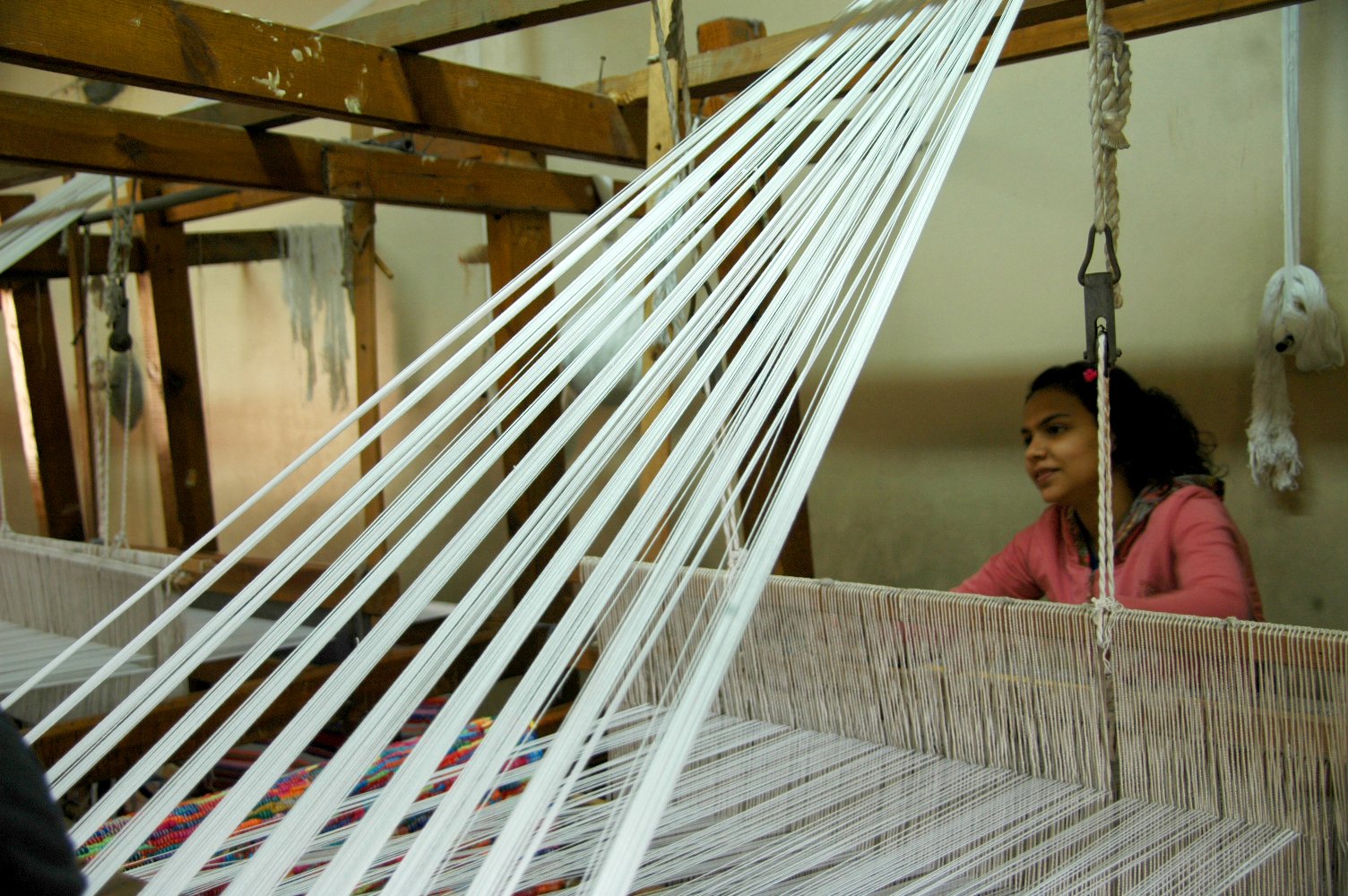Mexico: The Love Story of Chaquira and Tenango
The painstaking commitment of an artist to their craft is a true love story. Perhaps my favourite kind.
Huichol yarn painting
Last year, while travelling in Mexico, I fell in love with the many creative traditions of the country, the textile arts in particular. Two traditions captured me most. Chaquira, the Huichol beadwork and the Otomi, or Tenango, embroidery.
Named after Tenango de Doria in Hidalgo where the tradition originated, Tenango embroidery is considered a cultural heritage of Mexico. The pieces feature vibrant colours, images of flowing rivers, animals, and plant life, and often depict significant events, festivals, or holidays. Tenango creations are rich with symbolism and it’s easy to get lost for hours taking in a single piece of cloth.
This is exactly what happened to me when I visited the Museo Nacional de Antropología. As it stands, the complex spans over 79,000 square meters across 23 rooms, and is the largest museum in Mexico. You can take in the entire history of the country between those walls. I recommend putting aside an entire day to cover the endless, successive exhibition galleries. I didn’t get to all of the gallery rooms on my visit. I fell, merrily and entirely, into the traditional arts galleries.
I’m drawn to art forms that require painstaking, and often repetitious, dedication. I think of my long dance career, built off of innumerable hours in a dance studio. Or the endless scales and exercises that brought music intimately into my life. The painstaking commitment of an artist to their craft is a true love story. Perhaps my favourite kind.
The Huichol are indigenous people of Mexico. In their language, “huichol” means clairvoyant or medicine man. They mostly live in the mountains of Jalisco and Nayarit, but their art can be found in abundance all over the country. In every gift shop or handicraft store across the country, you are likely to find an assortment of colourful beadwork crafts, sometimes simply referred to as chaquira, or beads. In the past, the beads were handmade from clay, seeds, or shells. Each bead was painstakingly placed by hand and affixed with wax or resin to embellish items or create jewellery. These days, you can find the beadwork covering everything from bowls to figurines to masks or anything you can imagine.
Huichol beadwork crafts. Museo Nacional de Antropología. Mexico City, Mexico.
In addition to bead work, the Huichol are known for their “yarn painting.” At a glance, these tapestries appear to be a type of embroidery, but these intricate pieces do not involve weaving as we traditionally envision it, with a needle drawing a thread back and forth through fabric. Instead, in yarn painting, threads are covered in resin or wax and pressed into a board. The artist’s hands slowly feed the treated yarn onto the board, constantly tapping the material into place, creating these intricate worlds. Such an intimate connection to creation is something I relate to deeply. It’s no wonder I fell in love with these beautiful labours of love and dedication.
Huichol yarn painting
I couldn’t help myself. In Tonalá, on the outskirts of Guadalajara, there is an enormous handicraft market that stretches across the area. Here, I merrily sifted through heaps of Tenango pieces until I at last settled on two teal pillowcases, blooming with flowers and intricately embroidered with colourful birds and deer. Some day, I will be settled enough to gaze at them over morning coffee in my home somewhere in the world.
Be sure to scroll through the images below to take in the precious detail of these beautiful works and other poetic treasures found at the museum.
The large Tenango tapestry below is an agricultural and ritual calendar depicting the harvest cycle. The cultivation of corn, preparing the land, sowing, requests for rain, harvesting, storing, and celebration of dieties are all present.
Agricultural and ritual calendar
Agricultural rites and death. This Tenango depicts the festival of the dead and how is relates to the agricultural calendar, from care in the cultivation of flowers and corn to the creation of offerings.
Huichol yarn painting
Huichol yarn painting
The Lotus Weavers of Inle Lake
Lotus fibres come from the stems of the lotus plant, which are cut and twisted to reveal the fibres. The fibres are pulled from the stems, hung up to dry, then rolled together to form a single thread. Preparing lotus thread takes an enormous amount of time. It’s said that roughly 10 lotus stems are needed to produce a single yard of thread.
Visiting Myanmar (Burma) was a dream that, with much gratitude, I realised in the early weeks of 2013. The business I was working for saw a surprise closure, and I had two months before my new work contract began. I packed my backpack, left Seoul, and hit the road for two months in Southeast Asia.
There are several chapters to my time in Myanmar. The country sits silently and wildly revelatory. However, my time in and around Inle Lake shines in my memory. It had so many of the dreamy archetypes that rattle around my veins. The sun lifting its sleepy head above the lake, an infinity of water smooth like glass, the strength of vines that will accept and hold your weight, a monastery of whiskers, fishermen, the worn hands of silversmithing, the knowledge of plants, and weaving.
Creating textiles from lotus fibre is an ancient Burmese tradition. Indeed, it was once a widespread practice throughout several countries in Southeast Asia. Though lotus weaving started in the Inle Lake area only a century or so ago, it is now one of the only areas in the world where you can still observe the practice.
Lotus fibre comes from the stems of the lotus plant, which are cut and twisted to reveal the fibres. The fibre is pulled from the stems, hung up to dry, then rolled together to form a single thread. Preparing lotus thread takes an enormous amount of time. It’s said that roughly 10 lotus stems are needed to produce a single yard of thread.
Cutting the lotus stems.
Creating robes from lotus fibre is truly a labour of dedication and love, so it’s no surprise to learn that they were first created as an offering to local Buddhist abbots. At weaving centres today, you can find mostly scarves, skirts, or shawls made from lotus thread.
I visited a weaving centre during my time on the lake. The women operating the centre are happy to speak with you about the tradition of lotus weaving and the history of the centre itself. You are able to witness the steps of the lotus weaving process as they guide you through each phase of the tradition, from snapping the stems to pulling the finished cloth from the loom.
At the weaving centre, you can wander among the stacks of colourful fabrics made from lotus thread, silk, or cotton. Pure lotus fabrics will set you back a bit, however. Depending on the size of the textiles, these fabrics can cost hundreds of dollars. I was most taken by the lotus and silk blends. I came away with a coral scarf in this style for my mother, and a cotton fabric for myself. I waited as they sewed it into a longyi for me, the customary skirt-like fabric that is folded over at the hips and worn in Myanmar.
Lotus and silk blend scarf.
Lotus and silk blens.
The Weavers of Cairo
When I was in Cairo in 2014, I visited Garbage City and saw the ingenuity of the Zabbaleen first hand. Material might come into Garbage City as trash, but some of it leaves as art that is truly a treasure.
Manshiyat Nasser is a district in the western part of Cairo, Egypt and home to over 250,000 people. However, the area is often referred to simply as “Garbage City.” This name actually comes from one of the smaller, southern quarters of the Manshiyat district. Garbage City has a population of roughly 60,000 people and is covered in, you guessed it, garbage. The trucks, streets, and even rooftops are often heaped with bags of the stuff.
Much of greater Cairo’s garbage is collected and transported back to Garbage City. This is because the city of over 20 million never established a comprehensive system of collecting waste. The people of Manshiyat Nasser rose to meet this need and developed their own informal system of dealing with the garbage that is produced in Cairo.
The people who collect the trash are called Zabbaleen, literally “garbage people” in Arabic. For a small fee, the Zabbaleen will go door-to-door collecting garbage from Cairo residents. Empty trucks, carts, and donkeys will make their way into the city, and return heaped impossibly high with bags of waste. Back in garbage city, each bag is separated and sorted.
This may seem like a long, tedious, and outdated method, but there is a remarkable efficiency to the Zabbaleen system. An impressive near-90% of the trash collected is recycled in Manshiyat Nasser, which is around four times the amount that gets recycled in the minority world, or “western countries.” When I was in Cairo in 2014, I visited Garbage City and saw the ingenuity of the Zabbaleen first hand. Material might come into Garbage City as trash, but some of it leaves as art that is truly a treasure.
The Association for the Protection of the Environment (APE) is an NGO that has a chapter in Garbage City, providing a number of services to mostly women and girls in the area. APE has helped secure registration and birth certificates for over 35,000 girls, and provides basic healthcare services. The association offers literacy and remedial classes for children and adults. It also offers training in quilting, weaving, and paper-making.
Machine for paper making.
Scraps and leftover pieces from local factories are sent to Garbage City and, out of these materials, women rugs, pillows, puppets, and assorted textiles. Their creations can be purchased at the APE facility in Garbage City. However, the association has a permanent shop in Old Cairo at the Fustat handicraft market.
When I toured the APE facility in Garbage City, I lingered in every room. I couldn’t get over the powerful image of these capable women masterfully working the large looms. I heard a symphony between my ears as I watched them play the loom. Weaving is such a poetic practice. It is gorgeously meditative. Observing these women working only reinforced the certainty that weaving would be a part of my life in a deeper way.
I left that day with a few beautiful paper items and cards, which were easier to transport throughout my travels than the textiles that I was swooning over. As a visitor, there is much to see and learn at the APE center in Cairo. It is a recommended visit for anyone fortunate enough to visit this great city.
Weavers and the Literary Feminine
Weaving is associated with life. Indeed, we sew the seeds that produce the nourishment that sustains us. So it’s no wonder that weaving would be associated with the construct of the feminine or women, the bearers of life. I’m reminded of all of this trailing lore every time I take up my yarn or thread, every time I visit a textile atelier, or any time I see an image of a loom, spindle, shuttles, or long pointed sticks and hooks.
Symbols allow us to make sense of the world. Interesting, considering we are the ones who assign the symbols to their meaning to begin with. Nevertheless, there are those of us who are simply enthralled with symbols, symbolism, and all of the poetic lore that has trailed the centuries after it all. I am one of those such people. Human beings need ritual, and symbols serve as a vehicle with which we live ritualistically. We also need symbolic behaviour. Without it, we are not well and we are not artists.
The archetype of the weaver has long been symbolically tied to the literary feminine, wisdom, life, and the spider. The spider, ancient weaver in her own right, has long been associated with the feminine. In ancient Egypt, the spider was associated with the Goddess Neith. Some of the qualities attributed to her are weaving, wisdom, mothers and childbirth, wisdom, fate, hunting, rivers, water, the cosmos, storytelling, and war. All concepts containing a million interlacing fibres. Arachne, of the Grecian mythes, was a weaver of such skill it angered the gods and eventually cost her her life. The Hopi myth of the Spider Woman brought the world into existence through her weaving.
Weaving is associated with life. Indeed, we sew the seeds that produce the nourishment that sustains us. So it’s no wonder that weaving would be associated with the construct of the feminine or women, the bearers of life. I’m reminded of all of this trailing lore every time I take up my yarn or thread, every time I visit a textile atelier, or any time I see an image of a loom, spindle, shuttles, or long pointed sticks and hooks. It’s what I think of as I work the yarn for each piece of our Silvestris collection.
Weaver on Inle Lake, Myanmar (Burma).
Naturally, anyone can be a weaver. Weaving belongs to everyone and no one, all at once. We have created these concepts and constructs and woven them through every aspect of our lives, it has become a manner of speaking of things. I like seeing these constructs examined and understood in a more sober light. It makes us better, wiser, and freer people to understand what we have shackled ourselves with.
Kyoto - The Philosopher's Path
I first visited Japan in 2010. Chuseok (추석), the autumn harvest festival holiday, fell in such a way that it afforded the city a few extra days off. Usually a three day celebration, it managed to stretch a surprising six days that year. I used the extra days to journey over land and sea from Seoul to Kyoto. Culturally rich, Kyoto offers much to entice travellers.
I wrote the following words in personal journal at the time, detailing part of one day and a fitting feline encounter.
I first visited Japan in 2010. Chuseok (추석), the autumn harvest festival holiday, fell in such a way that it afforded the city a few extra days off. Usually a three day celebration, it managed to stretch a surprising six days that year. I used the extra days to journey over land and sea from Seoul to Kyoto. Culturally rich, Kyoto offers much to entice travellers.
I took the KTX train from Seoul to Busan, the metro to the ferry, and the ferry to the Hakata terminal in Fukuoka, Japan. Lovers of travel are often lovers of transit, and I was excited to take the Shinkansen bullet train the rest of the way north to Kyoto. We sped by under the falling dark, my ears sucking in and popping the whole time.
I wrote the following words in personal journal at the time, detailing part of one day and a fitting feline encounter.
The Kinkaku-ji is known as the Temple of the Golden Pavilion or the Deer Garden Temple. It sits across a lake that reflects its splendour in its glassy calm. It is a Zen Buddhist temple and glimmers outside throughout the seasons like a relentlessly perfect concept. The Gold is less accessible than the Silver Pavilion. They are equally enticing, though in such contrasting ways. The Silver is the deep of the psyche, with its cool grey tones and meditative walking paths. The Gold is resplendent, almost impossibly enchanting, like coming upon the fae light when out only for a stroll. The gardens here are smaller, and you are not permitted to wander the grounds. I wanted a picnic across the lake from this great sight, a soft falling of pink petals to complete the scene.
After visiting Kinkaku-ji, I wandered the entire length of the Philosopher's Path. It is a few blocks from the Pavilion, and I hoped to find the meditation implicit in such a name. The entire narrow road is lined by a calm stream. The road can accommodate only the tiniest of vehicles and is largely used as a bike and pedestrian path. It is a sleepy little path with low-hanging branches and people who seem to be in no great hurry for anything at all. I spied a few men dozing on side benches, people out casually with their small children.
Along my walk I came across patches of felines coupled here and there. I was absolutely un-surprised to see these pensive wise creatures on this path. They are, by far, the philosophers of the creature kind. Wise, poised, wrought with mastery. I leaped lightly over the little fenced side and made my way among them. I crouched in the grass and called them to me. Nuzzling ears and petting the long streaks of their bodies, a few Japanese women joined me. They were older women and full of smiles. We talked of our love for felines and they seemed just as thrilled as I was to be sharing this little exchange on this patch of grass this day. As I continued along I noticed that many of the little boutiques and cafés were cat-themed or incorporated felines into their name in some way. Once again, I found this perfectly fitting that felines should have such a home on the Path of Philosophy. It was such a comforting moment, as I have been so deeply sore without a feline here.
Dream Pillows
Herbal dream pillows have been used to promote better, more peaceful sleep for centuries. They are perfect for those who suffer from insomnia or intrusive dreams, or for those who can't seem to attain a lengthy stretch of uninterrupted slumber from one end of the night to the other.
Herbal dream pillows have been used to promote better, more peaceful sleep for centuries. They are perfect for those who suffer from insomnia or intrusive dreams, or for those who can't seem to attain a lengthy stretch of uninterrupted slumber from one end of the night to the other.
We first forayed into dream pillow crafting back in 2011 when we experienced a few months of constant sleep interruptions. Putting our intention behind the crafting and use of the pillows helped to release unhelpful energy and create an atmosphere in which truly restive sleep could flourish.
Our dream pillows contain sachets of juniper berries, chamomile, lavender, and sandalwood chips. Stuffing fibre is spritzed with sandalwood essence and allowed to dry naturally. This ensures a mild scent and an oil-free surface to your dream pillow.
Slip your dream pillow within the case of your regular bed pillow. Tuck it underneath or nestle it between your other pillows. Hug it close as you sleep, or rest your head directly upon it. There is no wrong way to use your pillow.
Make Your War Beautiful
Make Your War Beautiful is a self-portrait photo essay shot in the East Sea in Sokcho (속초) and in Seoul (서울), South Korea. The through line of the essay is a reckoning and making a beautiful alchemy out of personal anguish. This theme is reflected in the use of delicate materials through which certain collections of the essay are shot, the consistent gold leaf, and the struggle with and emergence from the sea.
Selected pieces from the Eros, Alchemy, and Reckoning chapters of the essay will be available at World Oddities Expo at the Pennsylvania Convention Center in Philadelphia on April 15th & 16th. Tickets available on the World Oddities Expo Webpage www.woetothee.com/philadelphia2023 If you are unable to join us at the expo, you can get prints directly from the shop on our website. This is a limited release.
All images are fine art prints, printed by a professional lab. The significant weight and richer texture of fine art print paper ensures greater depth and resolution of photographs for your display or collection.
Nga Phe Kyaung - The Jumping Cat Monastery
In early 2013, I spent a few months travelling around Southeast Asia. Myanmar/Burma was an important destination and a personal dream for so many years at that point. To this day, it remains one of the most extraordinary places I have ever been to. Memories of this journey quickly bring me to grateful tears.
In early 2013, I spent a few months travelling around Southeast Asia. Myanmar/Burma was an important destination and a personal dream for so many years at that point. To this day, it remains one of the most extraordinary places I have ever been to. Memories of this journey quickly bring me to grateful tears.
Inle Lake is located in the Shan State in Myanmar. Many cities and villages dot the shore line, while some exist entirely on the lake itself. Breathtaking homes and buildings on stilts tower above you as you glide through the water. Transportation for travellers is most often by short, skinny boats with small single-cylinder engines.
This day had me wide eyed and tearing over, struggling to process the incredibly abundant beauty of the world. I spent the entire day on the lake, trailing the local market, wandering off to find hidden monasteries, smiling Pa’o children dragging me into their games, and rooftop temples. I visited a weaving centre, a silver merchant, a cheroot market, and, by personal request, a monastery.
Nga Phe Kyaung is a wooden monastery that was built in the 19th century. It is said to be the oldest and largest monastery on the lake. Most people know it as the Jumping Cat Monastery, so called because of the many cats who lived there and were trained to jump through hoops. However, these days, the cats no longer jump. While I was there, I got to talking to one of the monks. He explained that the monastery came to see that it was not the best life for the cats, to be kept there to perform for tourists, and I'd have to agree. However, the cats were still there and still very much cared for. They were simply no longer made to perform. Though, one traveller was in the know and approached a cat. He ran his fingers up its chest and neck and the cat reflexively leapt. So I did, indeed, see a jumping cat, I suppose.
This lovely man and his nephew were my boat drivers and guides. I can still feel the warmth of their kindness and care that day. Wherever they are, I hope they are happy and thriving and have lives filled with the same warmth they showed me that day.
(Fun fact: There are large patches of floating plants along the lake, which you can see behind them in the picture. You can literally jump on these floating patches with all of your might and force, which I did. The succulent green will hold and support you like a solemn promise. Myanmar is magic.)
Silvestris
Why do we call our collection of warm, nurturing scarves, hats, shawls, and riding hoods our Silvestris Collection?
Why do we call our collection of warm, nurturing scarves, hats, shawls, and riding hoods our Silvestris Collection?
The word “silvestris” comes to us from Latin. However, a search of the term may result in a redirect in your browser’s dictionary or encyclopedia.
Our Wanderer scarf is the first release of our Silvestris Collection. It is currently available in our shop in regular size and extra long. Get yours in black, icy rose, cabernet, or a custom colour of your choosing. Head to the contact page to inquire about a custom order.
Keep scanning the forests, because new releases from this collection are coming all month long.

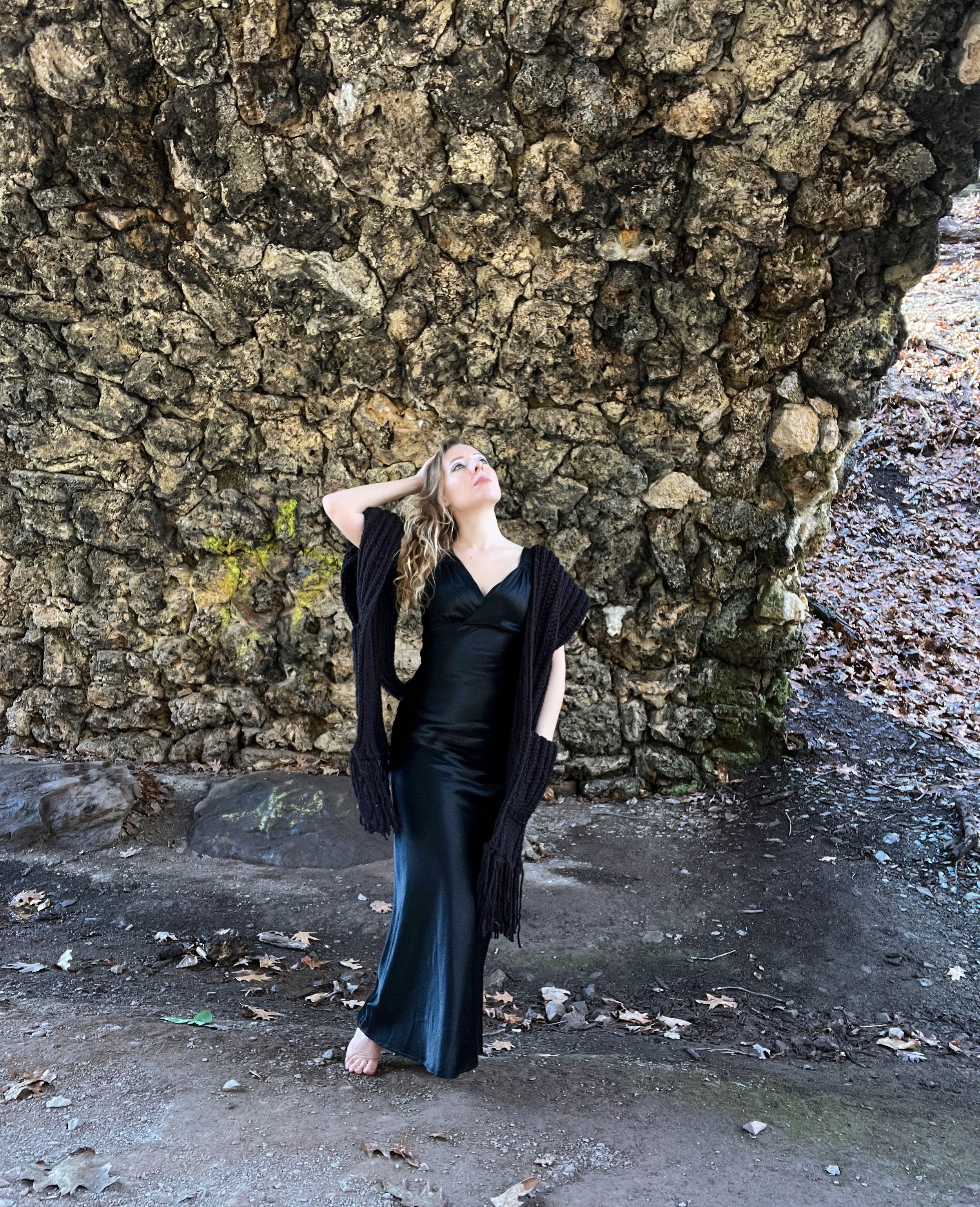
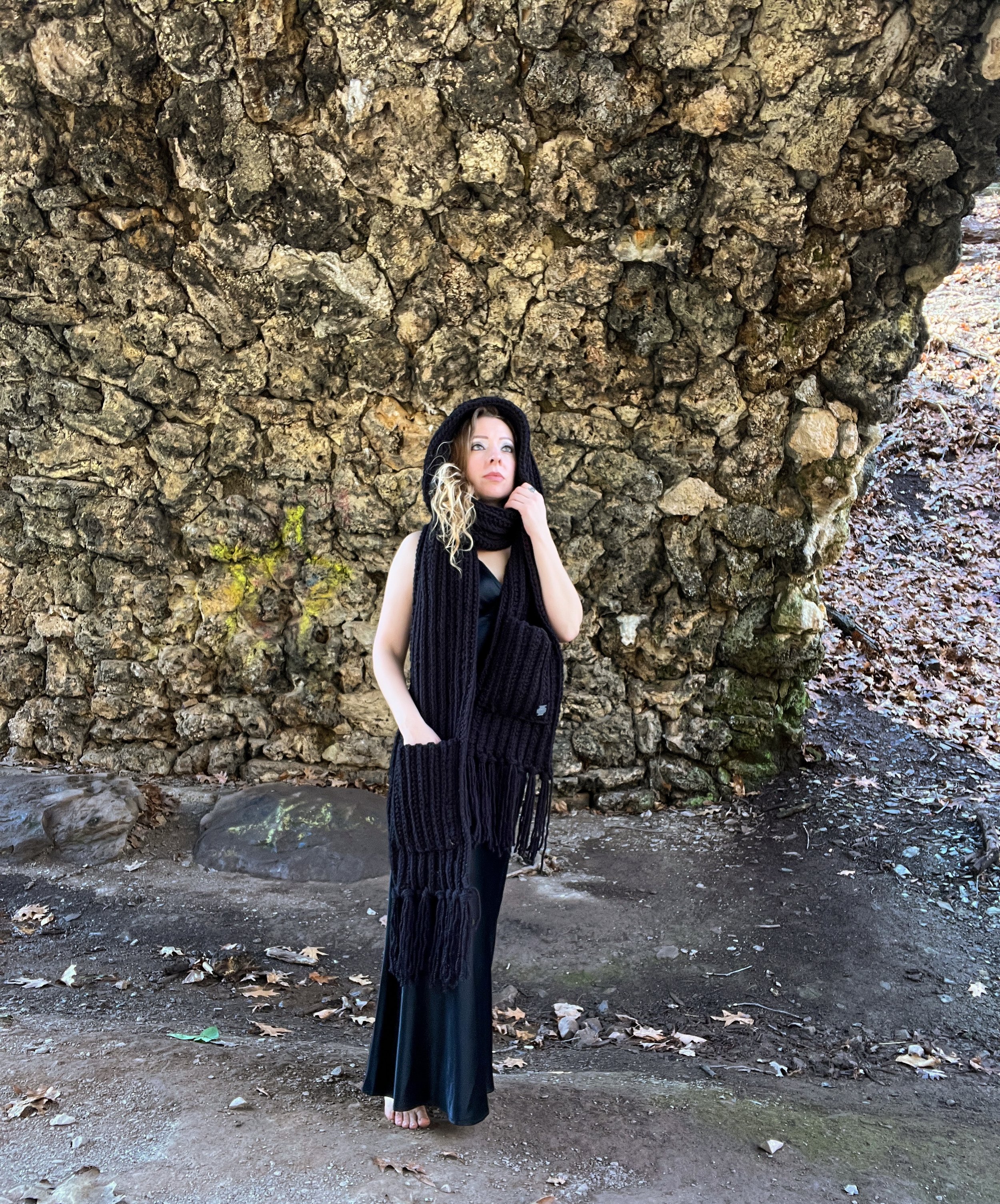
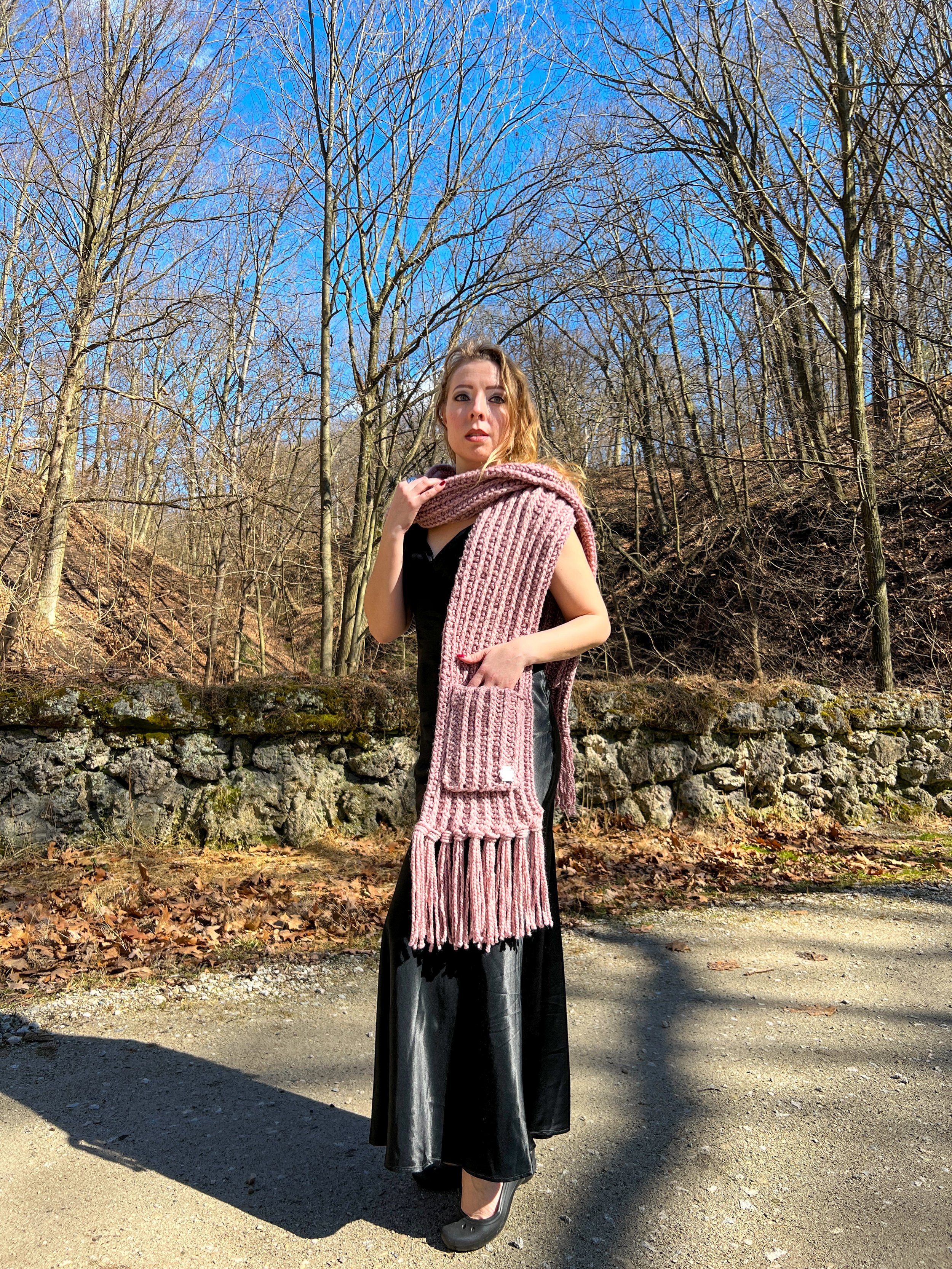
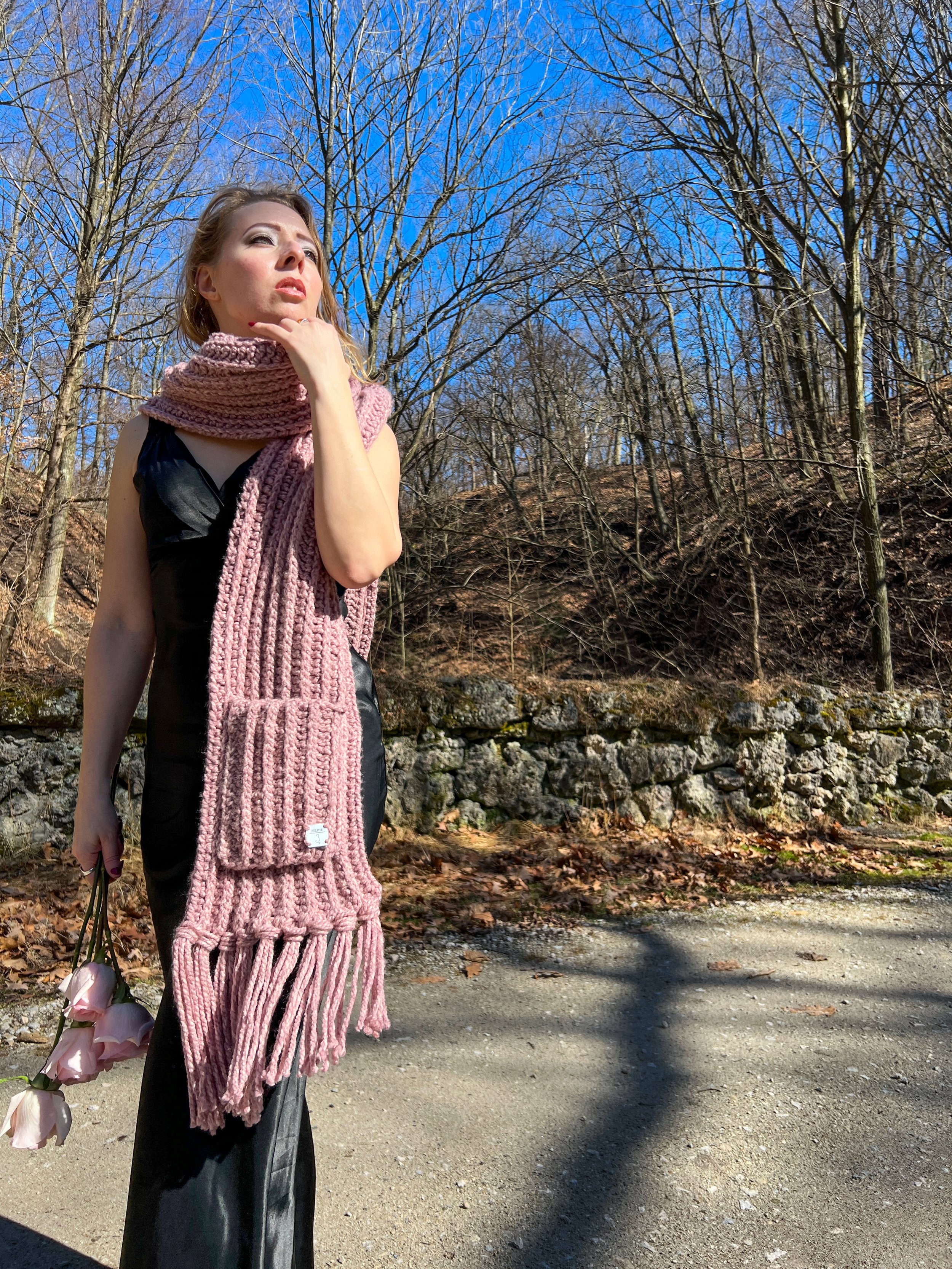
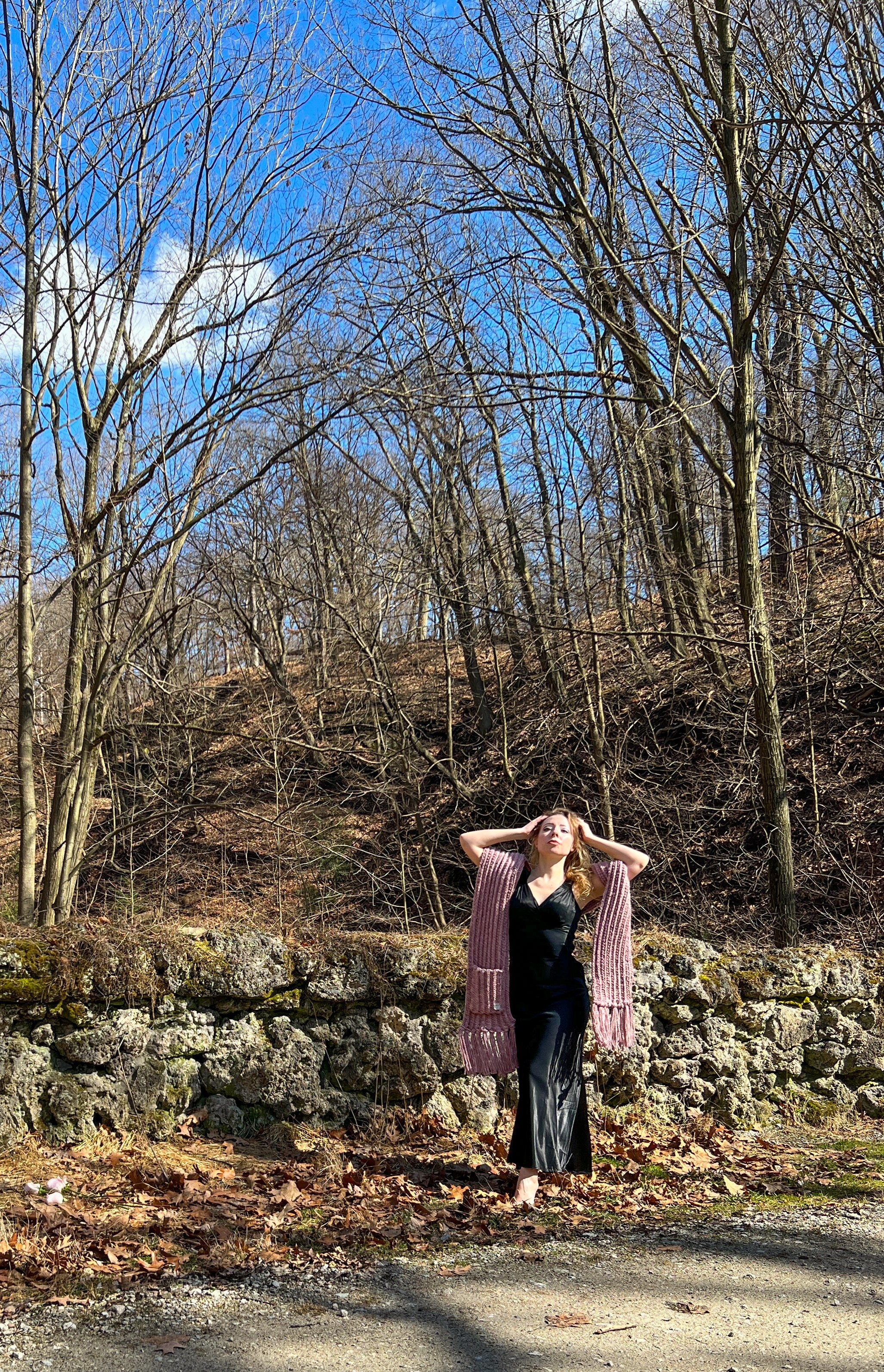
Coming Soon
Check back for more content coming soon.
Check back for more content coming soon.

























